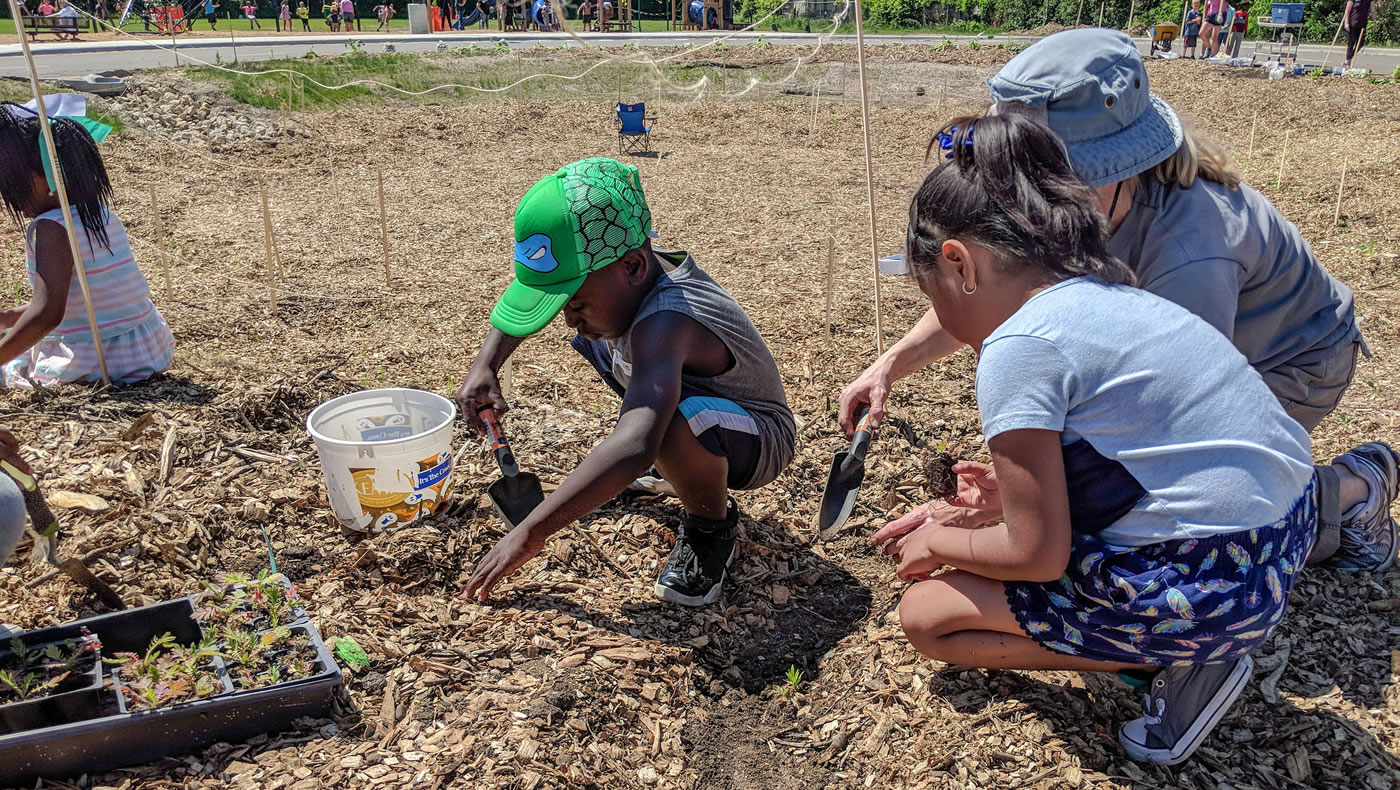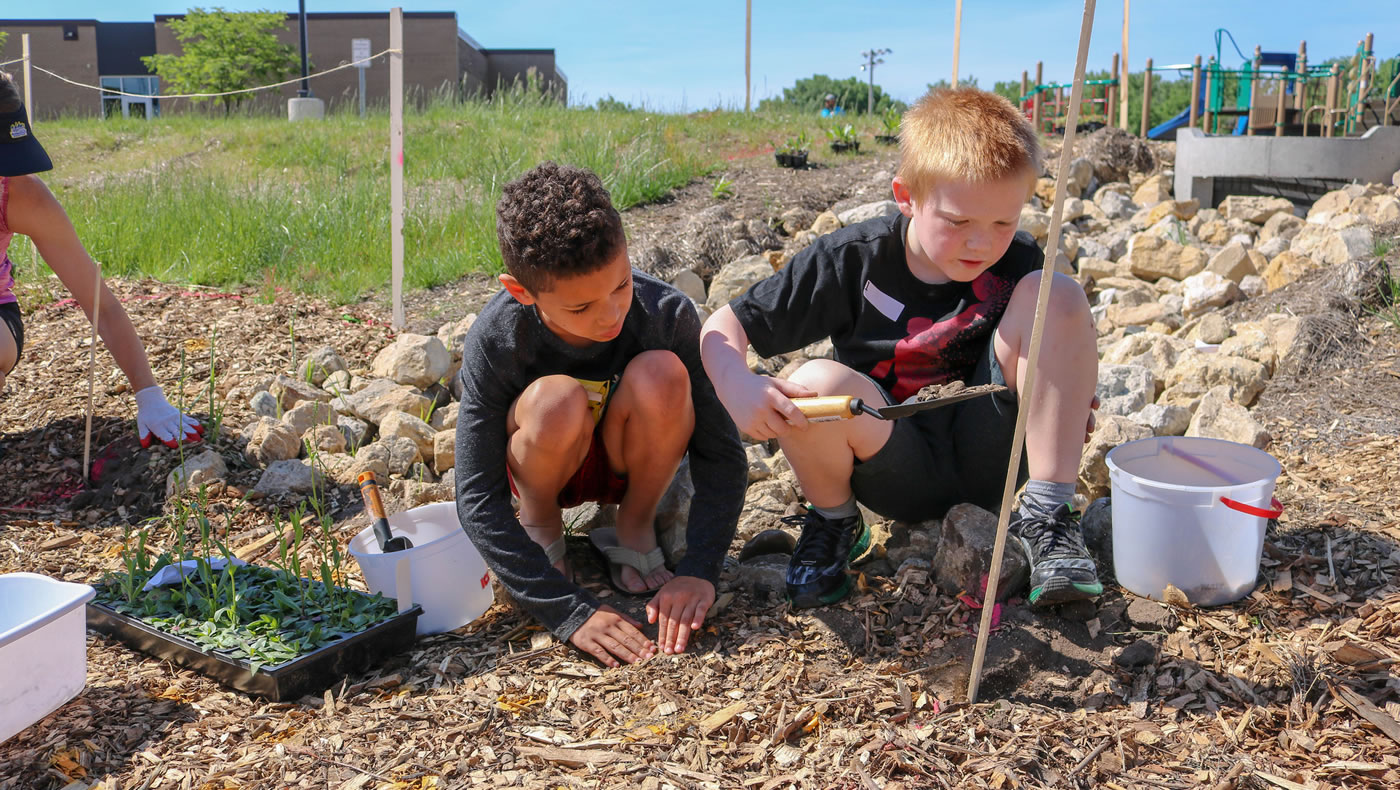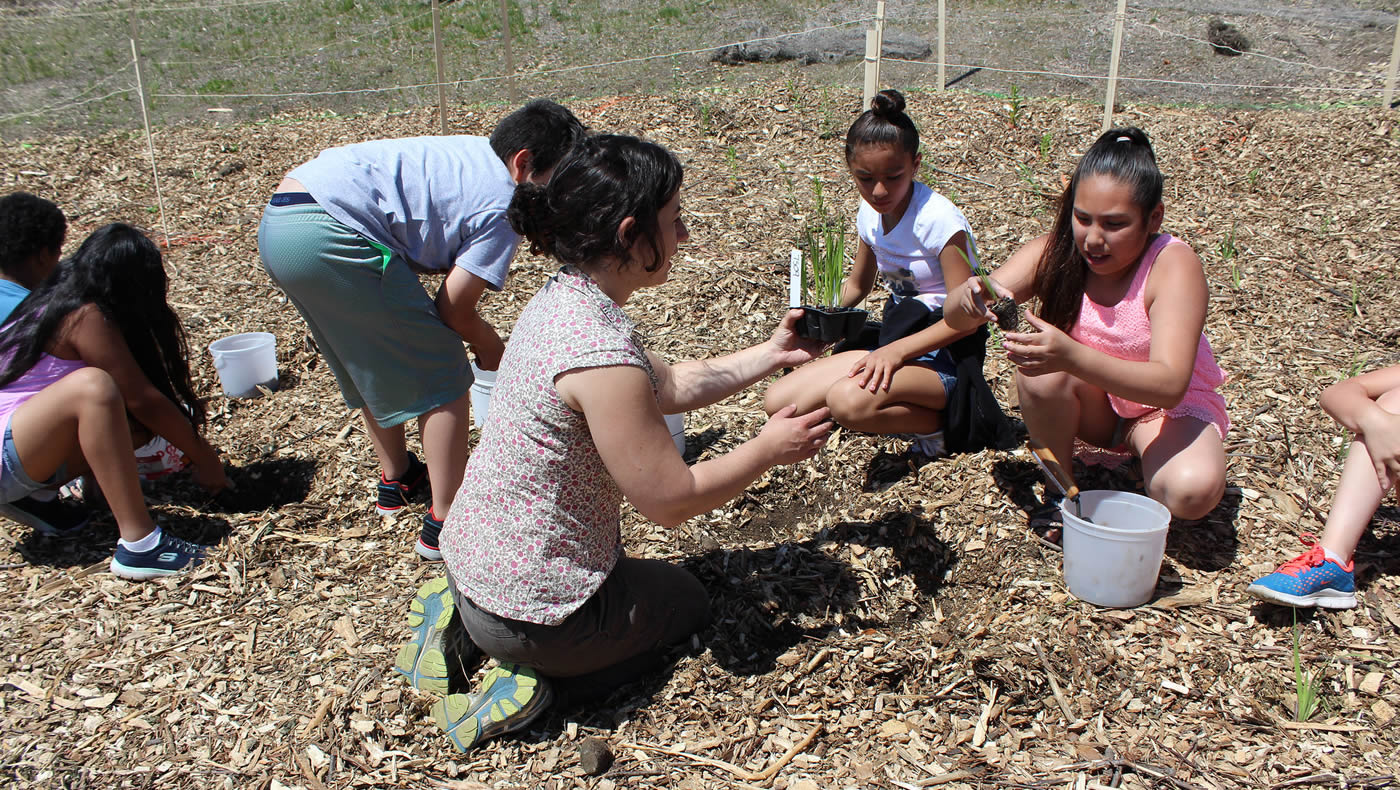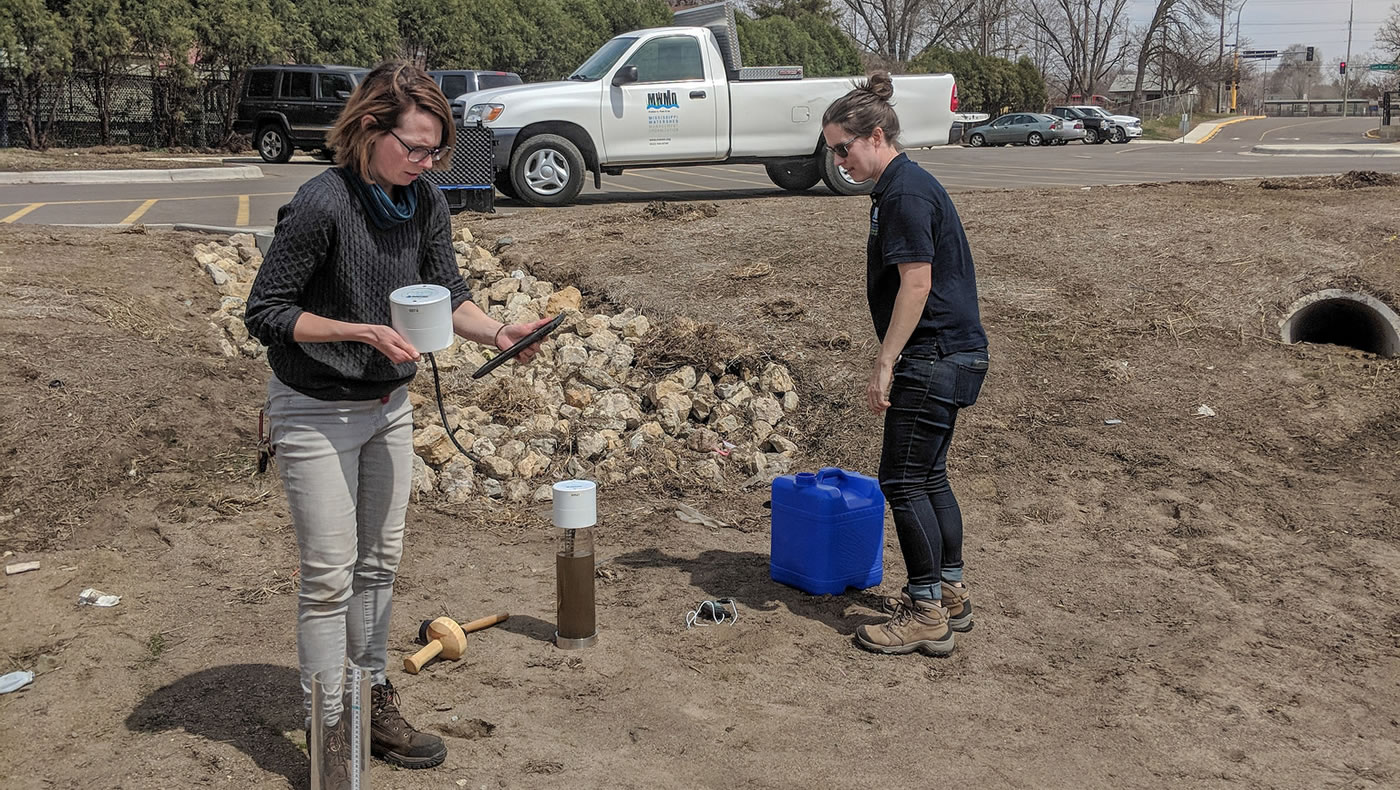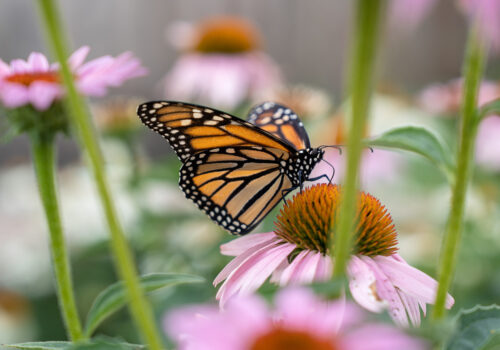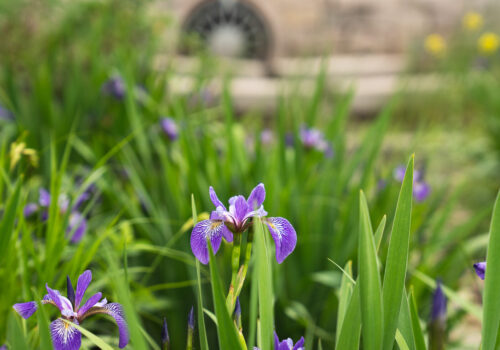In Fridley, students learn how to be good neighbors to the Mississippi River
Last week, a small army of students at Stevenson Elementary School mobilized to fill the school’s new raingarden with plants. We captured the event in a time-lapse video; as you can see below, it was no small operation. In the course of a single day, more than 600 of the Fridley school’s first- through sixth-graders planted 1,300 native plants (along with 200 hostas donated by staff and parents).
The event marked the school’s annual “Day of Action” — part of its larger vision to encourage environmental stewardship at an early age through inquiry-based learning. It also culminated a months-long learning curriculum for the students, and a successful behind-the-scenes collaboration between several local partners.
Beginning last fall, Stevenson partnered with environmental educator Heidi Ferris of Growing Green Hearts to create a series of learning modules. The lessons asked students at all grade levels to consider what it means to be a good neighbor to our local waters. Over the spring semester, kindergarteners learned about plants, first-graders explored the life cycle of pollinators, and fourth-graders learned about the water cycle. The MWMO awarded a Mini Grant for the project to help fund both the raingarden design and the educational lessons.
Stevenson has made great strides toward being a good neighbor to the Mississippi River, which flows less than 200 yards from the school’s athletic field. In 2014, an MWMO-funded restoration project repaired an eroded ravine that was spilling sediment and other pollutants into the river’s backwaters. When the school rebuilt its parking lot last year, it constructed a large raingarden to capture and treat its stormwater runoff on site. Stevenson saw an opportunity to use the raingarden planting as a hands-on learning opportunity for the students.
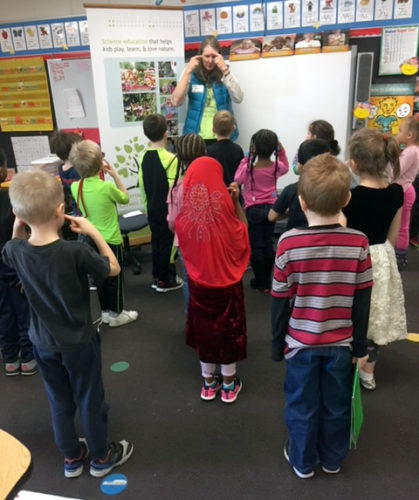
This spring, while Ferris and the school conducted the lessons, the MWMO coordinated with the City of Fridley to make sure the raingarden was in working order for the planting. Staff from the MWMO’s monitoring team used a device called an infiltrometer to test how quickly the raingarden could absorb water. They discovered that part of the raingarden was not performing to specifications — apparently the result of sand and silt that had accumulated during the course of the winter. To fix the problem, Fridley city staff removed several truckloads of excess material that was clogging the raingarden and preventing water from draining into the soil.
On the day of the raingarden planting, MWMO staff gave a short presentation to the students about how the raingarden would help filter pollutants from stormwater runoff before it entered the river. We found the students well-prepared. Thanks to the Growing Green Hearts curriculum, even the youngest participants were able to explain how water flows through local stormdrains directly to the river.
After the presentation, the students rotated through a series of stations, making seed bombs, playing yard games that simulated pollination, and finally planting the raingarden. Six hundred students and 30 adult staff members and volunteers participated in the planting. Students reveled in the opportunity to get out of the classroom and get their hands dirty.
This raingarden also functions as the center of a turn-around to manage traffic as parents drop off their children. The school plans to install interpretive signage detailing how the raingarden works, thus providing a daily reminder for Stevenson families of the school’s commitment to inquiry-based learning, collaboration, and protecting the Mississippi River from pollution.
